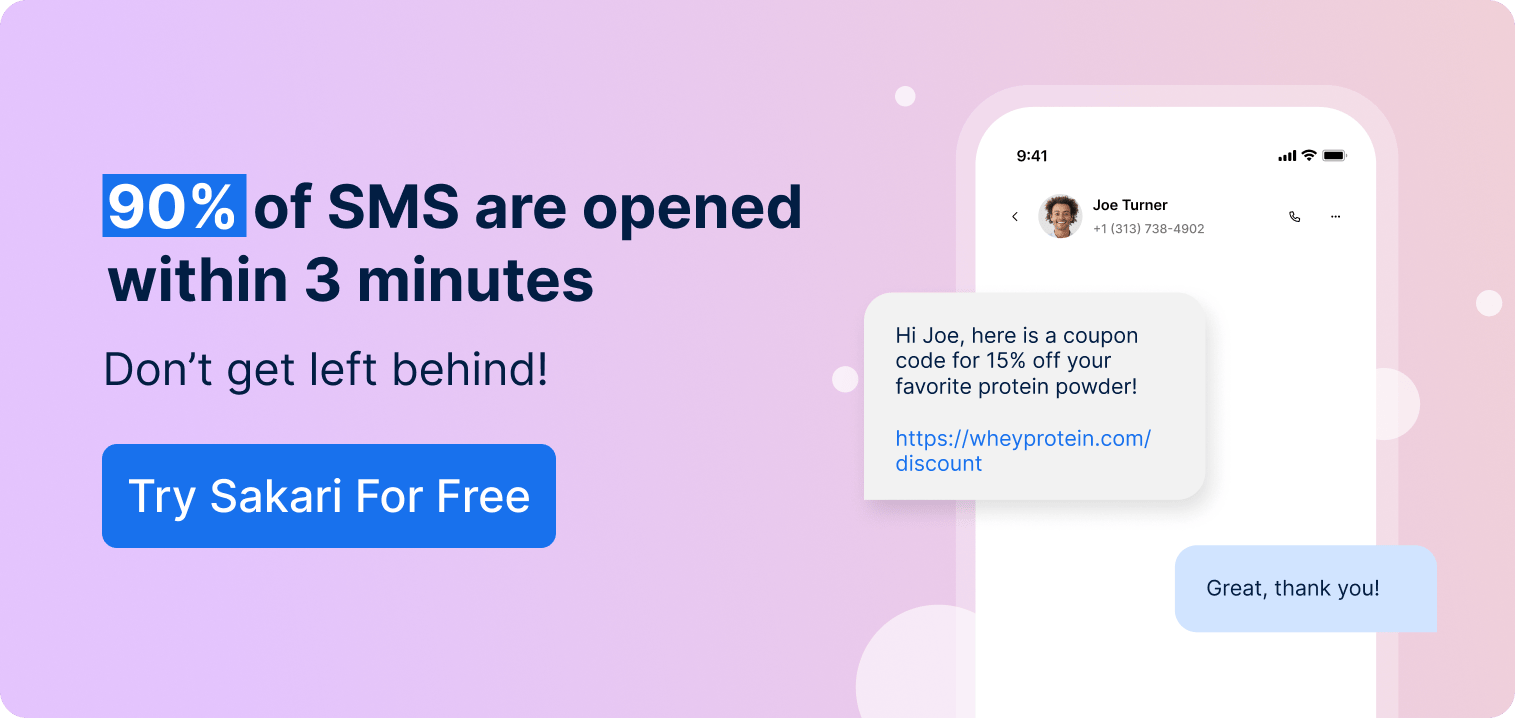The end of shared short codes doesn’t mean an end to efficient messaging. Sakari helps businesses transition smoothly by selecting the most effective phone number type for their specific needs.
With Sakari, you can set up text message marketing campaigns, automate notifications, and support your mobile marketing initiatives seamlessly.
Try Sakari's SMS Marketing Platform for FREE
Ready to transform the way you communicate with your customers? Start your 14-day free trial with Sakari today and experience the power of seamless SMS messaging at your fingertips.
No credit card required, just immediate access to all the tools you need to enhance engagement and drive results.

Shared Short Code FAQs
Why are shared short codes being phased out?
Wireless carriers are ending shared short codes to improve deliverability, security, and compliance. This shift to dedicated short codes or alternative options reduces SPAM and enhances user experience.
What is the difference between shared and dedicated short codes?
Shared short codes allow multiple businesses to use the same short code number, while dedicated short codes are exclusive to one brand, offering more control over keywords and optimizing marketing campaigns.
Are toll-free numbers effective for SMS marketing?
Toll-free numbers (TFNs) offer a cost-effective alternative for text messages, with an 8XX prefix supporting both SMS and MMS messages, enabling high volume messaging.
Can I use a 10-digit local number for SMS?
A 10-digit long code (10DLC) is a viable option, particularly in the United States and Canada, providing a local touch with high throughput for application-to-person messaging.
How does Sakari support compliance with new SMS policies?
Sakari assists businesses in staying compliant by guiding them to select the appropriate phone number type—whether dedicated short codes, 10DLC, or others. Sakari ensures alignment with mobile carriers’ standards for secure, effective SMS marketing.